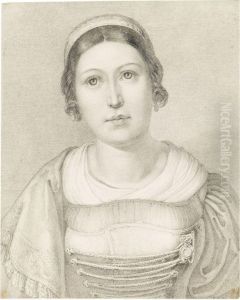Ferdinand Fellner Paintings
Ferdinand Fellner was an Austrian architect who, alongside his partner Hermann Helmer, significantly shaped the architecture of the Austro-Hungarian Empire during the late 19th and early 20th centuries. Born on April 19, 1847, in Vienna, Austria, Fellner was born into an architectural family; his father, Ferdinand Fellner the Elder, was also a prominent architect. This background provided Fellner with a solid foundation in the field and likely influenced his decision to pursue a career in architecture.
Ferdinand Fellner began his studies at the Polytechnic Institute in Vienna and later continued his education at the Academy of Fine Arts. His partnership with Hermann Helmer began in 1873, and together they founded the architectural firm Fellner & Helmer. The firm became well-known for its design of theaters and performance venues, which remain architectural and cultural landmarks in many cities throughout Central Europe.
The duo's work is characterized by its eclectic style, combining elements of Neo-Renaissance, Baroque, and Rococo, which was in vogue during the period known as the Historicism or Gründerzeit era in Central Europe. Their approach was also influenced by the Ringstraße style, named after the grand boulevard encircling Vienna's inner district, where many monumental buildings were constructed at that time.
Fellner & Helmer designed over 200 buildings, predominantly in the Austro-Hungarian Empire, with notable examples including the Volkstheater in Vienna, the National Theatre in Prague, and the Odessa Opera and Ballet Theater in Ukraine. They were also responsible for various urban planning projects, residential buildings, and even palaces.
Fellner's impact on the urban landscape of Central Europe was profound, and his work with Helmer contributed to the cultural development of the region by providing venues that housed the performing arts and thus supported the burgeoning artistic movements of the time. Their theaters, in particular, were not only places of entertainment but also important social hubs in the cities they graced.
Ferdinand Fellner died on March 22, 1916, in Vienna. His legacy, and that of his partnership with Helmer, lives on in the many structures that continue to define the cityscapes of Vienna, Prague, Budapest, and other cities. The firm's contribution to the architecture of the period has been recognized as both historically and artistically significant, and their buildings are often celebrated for their beauty, functionality, and the role they have played in the cultural life of European cities.

